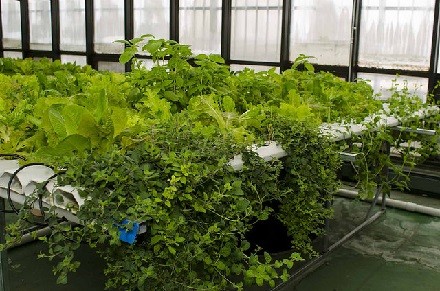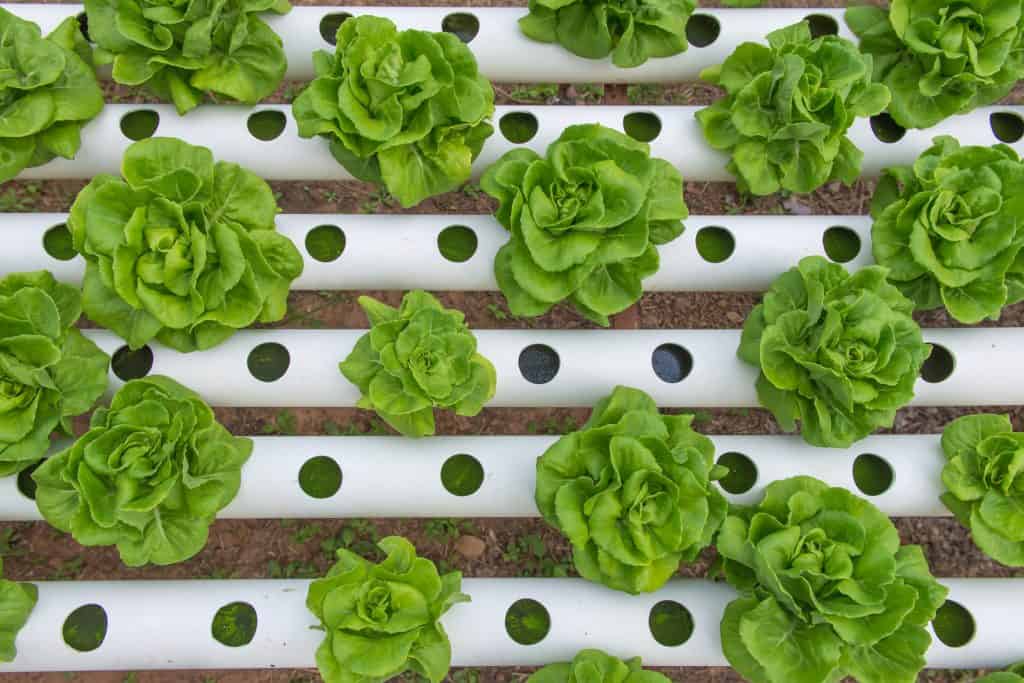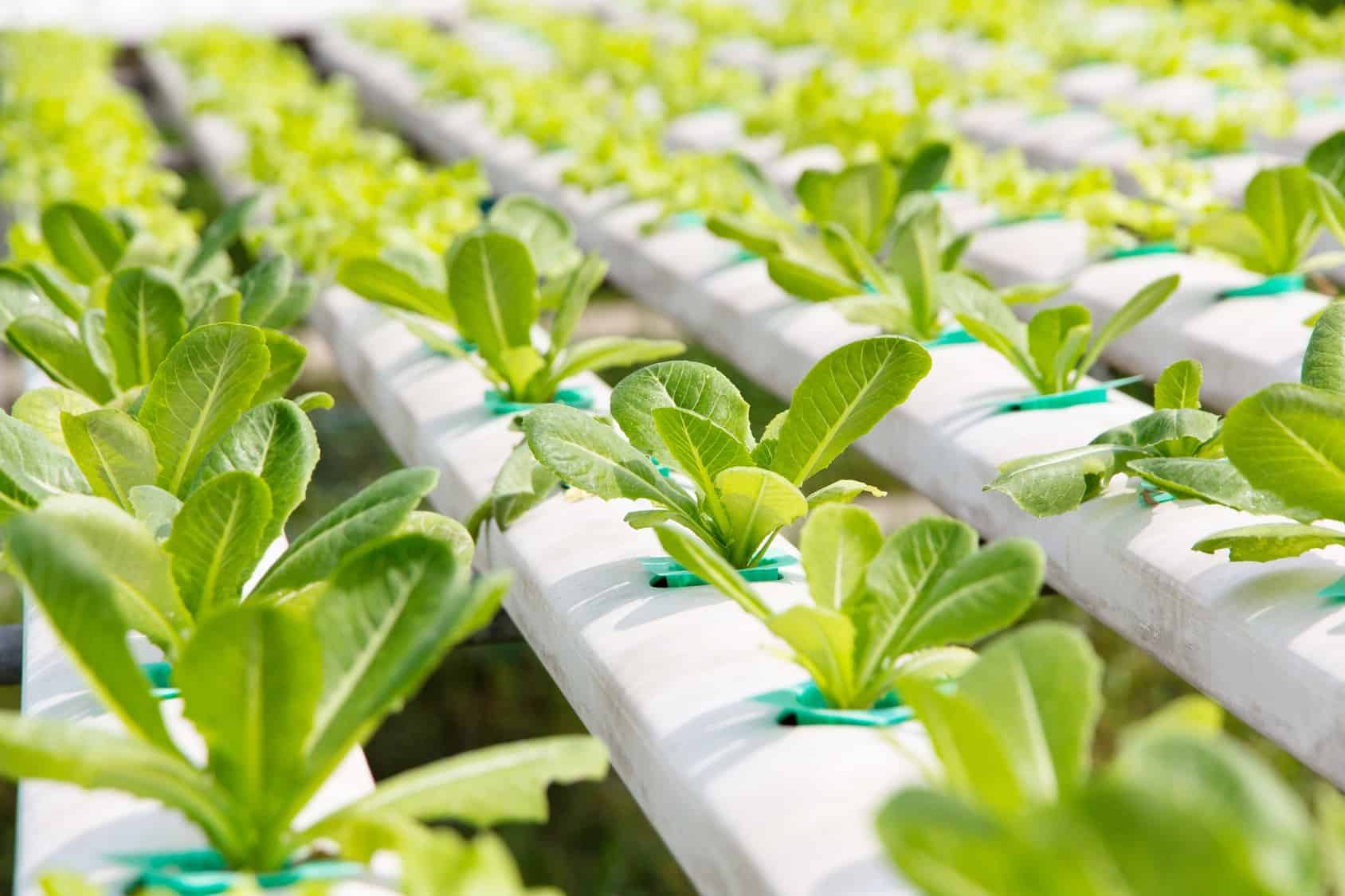Hydroponic greenhouse systems in simple words mean just growing crops in water.
Plants and vegetables are placed in a growing medium such as clay pellets, rock wool, recycled foam, foam, peat, sawdust, gravel or coconut fiber, and then, fed a feeder or nutrient to make them grow.
The main advantage of hydroponic greenhouse systems that they yield better crops by using simple water-based techniques.
Better Crops from Hydroponics
Plants grow faster than when placed in soil.
They don’t need to spend so much energy developing roots to find oxygen, nutrients and water, therefore produce better quality fruit or flower.
The number of vegetables and plants produced magnifies when using this technique.
For instance, the tomato yield per acre when grown in soil ranges from 5 to 10 tons.With the hydroponic method, it is usually between sixty to three hundred tons.
There is practically no risk of soil-borne pests, disease and fungus.
They yield bigger vegetables and plants without pesticides. Hydroponic lettuce
Greenhouse plants can grow all year round.
It is simpler to keep crops warm and within the sunlight.
Hydroponic systems take less time to tend as they require no weeding or watering.

How do hydroponic greenhouse systems work?
Hydroponic agriculture has been around for many decades.
But recently, it has gained traction with almost every gardening group ranging from commercial planters to big agriculture giants to amateur gardeners and urban farmers.
The word ‘hydroponic’ means water working.
The vegetables, plants or flowers survive on a combination of temperature, light, nutrients like nitrogen, oxygen pH and carbon dioxide supplied through the water.
The nutrients supplied can be in dry, liquid or organic blend forms.
Crops are grown on a salver or tray, or in a medium like a gravel or foam blend.
Water is then procured via reservoirs.
Unlike in traditional greenhouses, most hydroponic systems employ some type of medium for root support.
Because of this, hydroponic techniques are often termed “sub-irrigation culture.”
Most commercial greenhouse produce in developed regions is done using hydroponic greenhouse systems.
Essential items for hydroponic greenhouse systems – Suitable plants
It’s a good idea to know what you’d like to grow before you start building a hydroponic system.
The goal isn’t to get too specific.
You can have a general idea as to what type of greenhouse plants you need, without knowing the specifics.
For example, if you think you’d like to try Boston lettuce, kale and arugula, the fact that they are all leafy greens is what matters.
Why does this matter?
Because some kinds of plants are better suited to hydroponics than others.
Plus, you have to know if you need a trellis for climbing plants, deeper trays for root vegetables and so on.
Hydroponic supplies
Basic hydroponic supplies include a nutrient solution, a pump, a grow medium and channels for water to flow through.
A non-porous grow medium, such as vermiculite or expanded clay pellets that allow for extremely good drainage is the base for your plants.
The grow medium is placed into channels or a low pool which contains the most important of all hydroponic supplies — the nutrient solution.
The nutrient solution should be the basic food a plant needs, mixed well in a water solution.
Mainly potassium, calcium and magnesium are the preferred nutrients for plants, but often, other compounds are also added.
This solution should flow around the roots, and not fully submerge them.
Other important hydroponic supplies that are required are a pump and a way to determine the ph of the solution.
The pump keeps the nutrient solution constantly flowing which is essential for the whole hydroponic process.
A stagnant solution will quickly become stale and poison the plants.
The solution has to be constantly checked to maintain adequate nutrient levels.

Space for hydroponic greenhouse systems
If you already have a greenhouse, assess the available space inside it.
Take exact measurements, including the height of your greenhouse ceiling.
If the roof is sloped, note the height at the peak and lowest point.
Don’t forget to allow space for you to move around.
Also, make sure that the floor or ground is flat and level.
If you don’t have a greenhouse, there are many styles and sizes available for greenhouses like indoor and mini greenhouses.
Consider all the likely ways you’ll use a greenhouse.
If the purpose is only for hydroponic propagation, then buying a hydroponic greenhouse kit might be the best solution.
More on greenhouse kits later in this article.
How much light do hydroponic greenhouse systems need?
Make note of the amount of natural light and in which direction(s) it enters the greenhouse.
Too much direct sunlight can be overwhelming for many sensitive plants. Initially, when plants are seedlings, they should be blocked off from light to allow for proper root growth.
For this, you may need to buy shade cloth or curtains.
These can also be automated to cover a part of the greenhouse during certain times of the day.
You can also use artificial grow lights for hydroponic greenhouse systems.
Some natural light, ideally diffused by a tree canopy, can help reduce the cost of energy for artificial light.
Read more about the lighting requirements for greenhouses in our well-researched article here.
Hydroponic system power supply
How will you power the lights and pumps?
Before you can set up a hydroponic system, you need a safe and reliable source of electricity.
For this reason, most people set up their greenhouse hydroponic garden near a house, garage or work shed.
They provide easier access to electricity.
Where to get constant water supply for your hydroponic garden
Of course, a reliable, flowing water source is essential to a hydroponic garden.
You will need access to large tanks of water to run a good hydroponic system.
Consider installing reservoir tanks that can be connected to your system directly or through garden hoses to keep everything running smoothly.
Types of hydroponic greenhouse systems
Now that you know the basics, you have to decide the kind of hydroponic system you will need for your type of growing.
There are many types of methods and systems used for growing plants in water solutions.
- Deep Water Culture or Reservoir Method
- Nutrient Film Technique
- Wicking
- Ebb and Flow
- Drip
Hydroponic Reservoir Method or Deep Water Culture
This kind of hydroponic system is commonly known as the reservoir method.
The plant roots are suspended in an aerated nutrient solution.
An air pump continuously adds oxygen into the reservoir so that the plant roots don’t drown.
The reservoir method of hydroponics is the easiest to set up and requires minimal equipment.
The only items needed for it are a reservoir with containers to suspend the plants, an aquarium-style air pump and some lights.
Make sure light can’t penetrate the reservoir.
If that happens, algae will grow and disrupt the nutritional balance of the solution.
The algae can then clog the air pump.
Hydroponic Nutrient Film Technique (NFT)
In this type of hydroponic system, the nutrient solution continuously flows over the tips of the roots.
As a result, the plant gets more oxygen from the air than the solution and often grows at a faster rate.
NFT is popular for outdoor home use because it uses less water.
Plus, there are many affordable kits for this technique to support a variety of plants and growing seasons.
Hydroponic Wicking System
This is the easiest and most inexpensive type of hydroponic system available.
Plants are propagated by suspending their roots in a growing medium such as vermiculite.
Tucked into the growing medium is a naturally absorbent material such as cotton.
One end of the absorbent material is placed into the nutrient solution.
The idea is that the nutrients are slowly drawn into the growing medium where the roots can access them.
You can also skip using the absorbent material and let the nutrient solution seep directly into the growing medium.
Either way, very little equipment is necessary.
Ebb and Flow Recovery Hydroponic Greenhouse Systems — Flood and Drain Method
This is an active recovery type of hydroponic system, sometimes known as the flood and drain method.
A pump submerged in the reservoir sends the nutrient solution up into the plant container, flooding the roots.
Using a timer, the pump turns off after 20-30 minutes.
Gravity drains the container where the roots are and sends the nutrient solution back into the reservoir.
The pump can restart by the timer or gauge that measures the level of recycled nutrient solution.
The gauge method is preferred because it reduces the risk of drowning the roots.
Hydroponic Drip System
The drip method of hydroponics has a slow, steady drip of nutrient solution entering the growing medium surrounding each plant.
Slow draining mediums such as peat moss or coconut coir are best for this method.
More equipment is needed for this method because each plant (or cluster of 2-5 plants) needs its own drip tube.
There is also the risk of nutrients building up in the drip tubes and causing blockages.
But the advantage is the ability to adjust the drip rate for each plant to help adjust the growth rate.
Guide to building your own hydroponic greenhouse systems from scratch
Ready to grow healthy greenhouse plants in a flash?
Install a hydroponic system yourself and reap the benefits of growing your favorite plants quickly without soil.
Should you build your own system?
For those new to hydroponics, building a system from scratch can be intimidating.
For those of you who are starting out, we have the perfect solution — a hydroponic greenhouse kit.
Once familiar with its setup and processes, you can easily make DIY enhancements to your system.
No matter how you approach greenhouse hydroponics, you’re sure to enjoy the results.
Hydroponic greenhouse kits
There are lots of hydroponic kits for beginners and professional gardeners.
Hydroponic grow kits make it easy to begin gardening with water.
The right kind of greenhouse hydroponic kit contains all that is required for growing the plants you want.
Hydroponic Greenhouse Kit components:
Most hydroponic kits come with a base cesspool in which the nutrient and mineral solution is placed.
An outdoor air pump will be included in the kits to supply the paths with the oxygen needed.
A bubbling pump also works perfectly to oxygenate the water solution.
The grow kit will also contain containers for the vegetables and plants to sit in the base cesspool.
Growing mediums like rock wool and foam, are also typically included.
Normally, the nutrient and mineral solution must be purchased separately.
Greenhouse hydroponic grow kits will contain instructions and tips on growing plants inside them.
If you buy more than 1 kit, you can mix and match their components to maximize the benefits of each kit.
You’ll need to find kits compatible with each other for this.
Hydroponic grow kits can be used for in-home and outdoor gardening.
Starting a hydroponic greenhouse does not need a big investment as you can use affordable construction material or even recycled materials for it.
Purchasing a greenhouse kit, however, is another good option especially if you don’t wish to be bothered with creating it for the first time.
When purchasing hydroponic greenhouse, you’ll be encountered with many alternatives.
Regardless of the complexity and type of the hydroponic greenhouse kit, they will all have water tanks with pumps, plant holders and seeds.
Indoor hydroponic systems conserve water more than conventional soil farming.
There is almost no water lost as all water gets recycled within the system.
You can also automate the systems.
Automated sensors include light timers, nutrient and pH sensors that automatically add sufficient nutrients into the system.
The more automated the hydroponic system is, the more space it will occupy.
Why Hydroponic Greenhouse Kit or System
Hydroponic greenhouse systems have been around for ages.
However, recently, it has started to attract attention with a larger number of gardeners preferring it for many reasons.
Hydroponics reduce a plant’s dependency on soil, thereby preventing soil-related diseases and infections.
The roots of the plant are fed a nutrient-rich water solution, which boosts its growth and yields quality crops all through the year.
Another word for hydroponics is sub-irrigation culture. Aeroponics System: How Does It Work?
Most of the commercial production of vegetables in developed countries is produced using this technique.
For a hydroponic system, you will need suitable plants, nutrient solutions, growing mediums, channels and pumps.
All these items can be found in greenhouse kits as well.
There are many hydroponic greenhouse systems like deep water culture, nutrient film technique, wicking, ebb and flow, and drip, each with its own methodology.
Hydroponics is truly the future of agriculture as it relies on recycling water and boosting plant yield in a healthy, safe and sustainable way.
How to Grow Hydroponic Tomatoes
Growing Tomatoes in Pots and Containers
Greenhouse Plants
Portable Greenhouse ~ What to Consider Before Buying One
How to Ripen Green Tomatoes
Ebb and Flow Hydroponic System
Aquaponics vs Hydroponics – What’s the Difference?
Aeroponics vs Hydroponics – Which Is Best
Hydroponics vs Soil: Which Is Better

